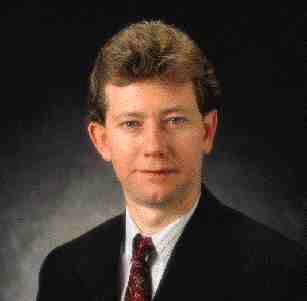

Corporate Tax Drive – it’s a home run
June 1, 2000 JANE VOLL, Director of Policy and Research at the Insurance BureEach year, for the last several years, federal and provincial governments have collected $4 billion in taxes from home, car and business insurance — an amount equal to the industry’s entire value-added. This 100% tax burden is more than three…
U.S. data threatens long-term growth
May 1, 2000 by Canadian UnderwriterImbalances in growth rates for property/casualty insurance premiums, losses and expenses could lead to a record downturn, says Frank J. Coyne, president and chief operating officer of Insurance Services Office Inc. (ISO). Forecasts based on third-quarter 1999 growth rates show…

Maximizing Auto Claims
May 1, 2000 Roch Lacroix, vice president of Mitchell International CanadaAuto physical damage claims (APDs) represent a significant portion of claim costs for most insurers dealing in personal lines business. But, should this area of claims management be simply seen as the “dark evil” of being in the business, or…

High Impact Ahead
May 1, 2000 Sean van Zyl, EditorWith the growth of property and casualty insurance industry earnings having plummeted to almost a 20-year low on the back of poor investment returns and intense rate competition — which saw last year’s annual rate of premium growth clock in…
U.S. yearend figures dismal
May 1, 2000 by Canadian UnderwriterFor the 1999 financial year the U.S. property and casualty insurance industry produced a disappointing 6.6% rate of return compared with 9.2% for 1998 and 11.9% for the year prior. The industry’s drop in shareholder returns for the year was…
CORRECTION (May 01, 2000)
May 1, 2000 by Canadian UnderwriterIn February’s Moves and Views, an incorrect address was given for the Property and Casualty Insurance Compensation Corporation’s website. The correct address is www.pacicc.com. CU regrets the error.
U.S. Insurers look beyond the ratio
March 1, 2000 Lowell Conn & Sean van ZylU.S. insurers are fortifying themselves for lower profitability and a higher operating ratio in the coming year, a survey revealed at the 2000 Property & Casualty Insurance Joint Industry Forum recently in New York City. Industry chiefs insist that, despite heightened merger and acquisition in the year ahead, the overcapitalized insurance environment could soon be swept away by an abundance of cost-absorptive changes.
U.S. fin-reform focuses CEO strategy planning
March 1, 2000 Sean van Zyl, EditorThe repeal of the U.S. Glass-Steagall legislation toward the end of last year has opened what many in the property and casualty insurance industry see as a “Pandora’s box”. The legislation was replaced with the Financial Services Modernization Act of…
News – 01-MAR-00 (March 01, 2000)
March 1, 2000 by Canadian UnderwriterThere are a multitude of parallels between changes affecting the securities and insurance industries, notes 2000 Property & Casualty Joint Industry Forum keynote, Goldman, Sachs & Co. chief executive officer Henry Paulson Jr. “Globalization and technology are driving a whirlwind…

The Political Lobbying War Heats UP
March 1, 2000 Sean van ZylControl over the distribution of insurance products is once again back on the property and casualty insurance industry’s radar screen as the federal government’s proposed white paper on financial services competition is set to go forward before parliament for legislative…

Undercurrents
March 1, 2000 Sean van Zyl, EditorThe friendly bout gloves seem to have been removed in the latest acquisitional match of industry consolidation, namely the less-than-friendly bid made by listed Equisure Financial Network in the beginning of this year for its public-traded rival, Canada Brokerlink Inc.…

Developing niche lines of business: The garage sale closed
March 1, 2000 by Lowell ConnWhen the “garage sale” begins and market players undercut one another, nowhere is the reverberations felt any stronger than the specialty lines business. Niche operators want the message to be clear: “Stay out of out of our business”. More to…